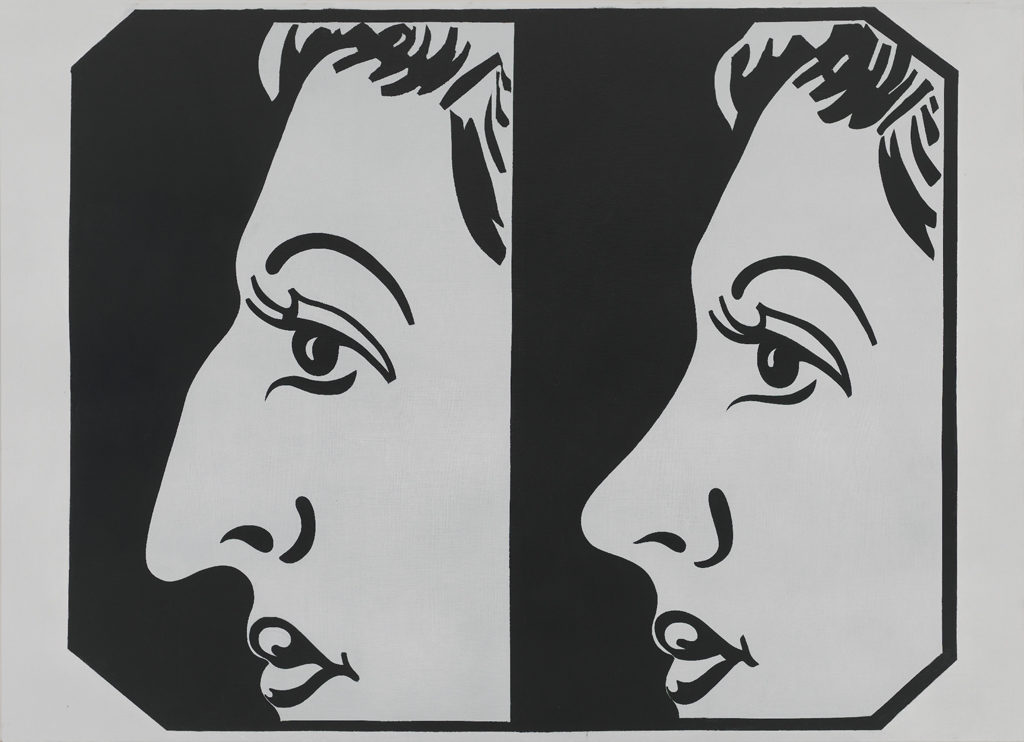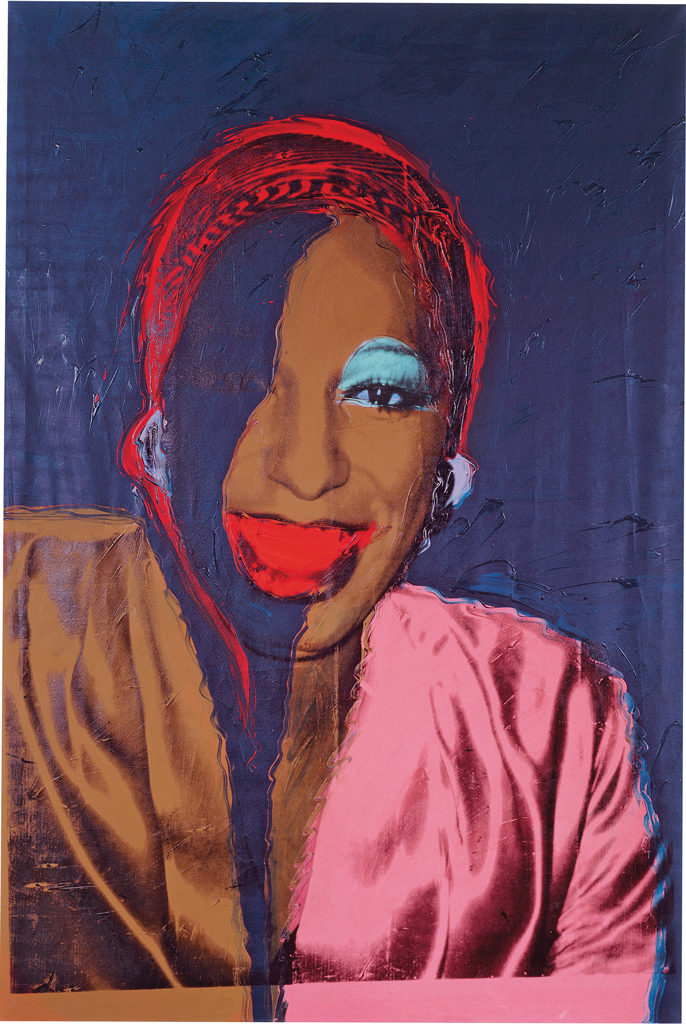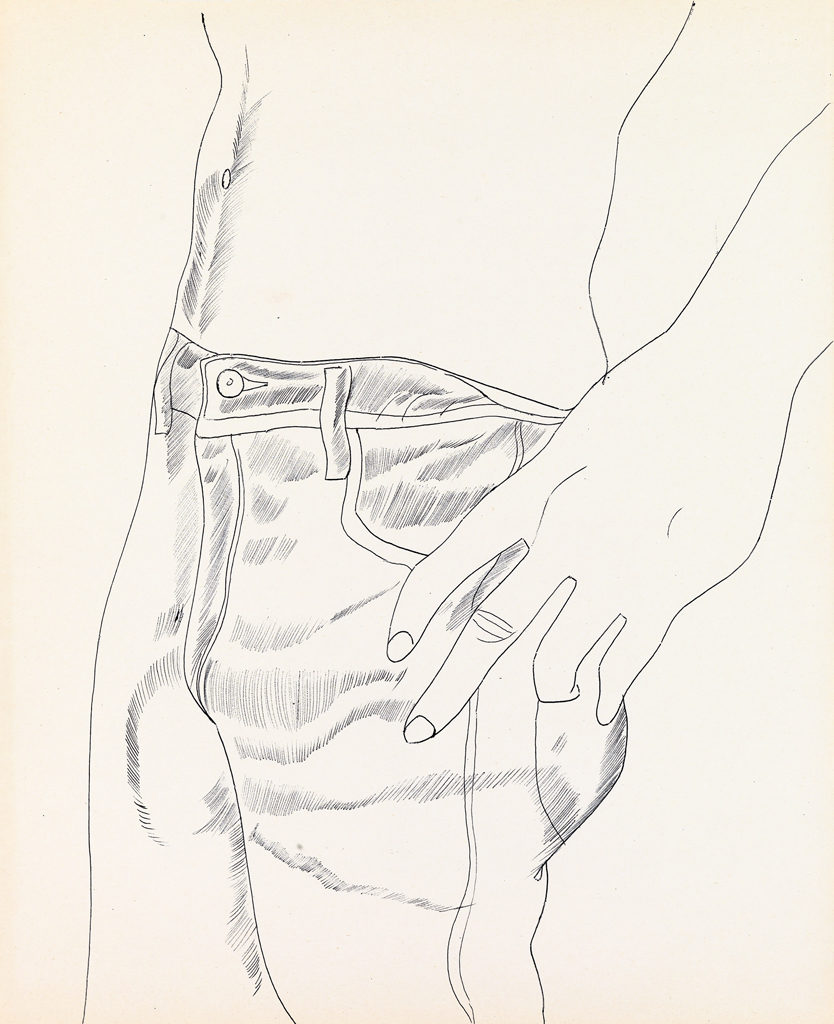[ad_1]

Andy Warhol, Before and After [4], 1962.
©THE ANDY WARHOL FOUNDATION FOR THE VISUAL ARTS, INC. AND ARTISTS RIGHTS SOCIETY (ARS), NEW YORK/WHITNEY MUSEUM OF AMERICAN ART, NEW YORK
In 1963 Gene R. Swenson, working on assignment for ARTnews, conducted a series of interviews with Pop artists. One of them was Andy Warhol, who offered Swenson some of the most vital words ever said about his paintings of Campbell’s soup cans, actress Elizabeth Taylor, and other subjects. An essay by art historian Jennifer Sichel printed in the Oxford Art Journal this past March revealed a previously unpublished segment of that interview—in which Swenson asked Warhol about homosexuality. Warhol jokingly answered, “I think the whole interview on me should be just on homosexuality.” With a Warhol retrospective opening on Monday at the Whitney Museum in New York that looks at the role queerness played in the artist’s oeuvre, we went back into the archives of ARTnews (including Swenson’s interview) to find excerpts about the roles that bodies, homoeroticism, beauty standards, death, and desire played in Warhol’s work.
March 1956
Andy Warhol . . . is a young artist who may be said to be addicted rather than dedicated. Currently he is addicted to shoes—or, rather, hand-drawn images of them; single, never in pairs, and usually large enough to fit circus giants of both sexes. Naïvely outlined in strict profile and then, as it were, smothered in gold-leaf and decorative commercial-cutouts in gold (tassels, cupids, conventional borders), they have an odd elegance of pure craziness. If one doubted they were fetiches, his doubt would be dispelled by noticing an evening slipper is inscribed to Julie Andrews and a boot to James Dean.
—“Reviews and previews,” by Parker Tyler

Andy Warhol, Big Electric Chair, 1967–68.
©THE ANDY WARHOL FOUNDATION FOR THE VISUAL ARTS, INC. AND ARTISTS RIGHTS SOCIETY (ARS), NEW YORK/THE ART INSTITUTE OF CHICAGO, GIFT OF EDLIS/NEESON COLLECTION
November 1963
Why did you start these “Death” pictures?
I believe in it. Did you see the Enquirer this week? It had “The Wreck that Made Cops Cry”—a head cut in half, the arms and hands just lying there. It’s sick, but I’m sure it happens all the time. [. . .]
When did you start with the “Death” series?
I guess it was the big plane crash picture, the front page of a newspaper: 129 DIE. I was also painting the Marilyns. I realized that everything I was doing must have been Death. It was Christmas or Labor Day—a holiday—and every time you turned on the radio they said something like, “4 million are going to die.” That started it. But when you see a gruesome picture over and over again, it doesn’t really have any effect.
But you’re still doing “Elizabeth Taylor” pictures.
I started those a long time ago, when she was so sick and everybody said she was going to die. Now I’m doing them all over, putting bright colors on her lips and eyes.
My next series will be pornographic pictures. They will look blank; when you turn on the black lights, then you see them—big breasts and . . . If a cop came in, you could just flick out the lights or turn on the regular lights—how could you say that was pornography?
—“What Is Pop Art?,” by Gene R. Swenson
Summer 1966
A remarkable thing about [the film] Blowjob was that when Allen Ginsberg saw it he was reported to have said, “The whole theater lit up when he came.” While Paul Blackburn told me, “The thing never came up at all; he was like a hungup, man.” This is a clear-cut contradiction, and again it was a case of reading out the proposition from the image of a face. . . . How do you know anything was going [on] at all in Blowjob? All we saw was the image of a face, peculiarly blank. Perhaps what we recognize is that enigmatic, introspective smile of one turned back upon himself. We recognize the same smile in Haircut, in Eat, in Leonardo’s angels. Does this suggest a new interpretation of La Gioconda?
In [his paintings of Taylor] . . . the “ideal,” expressionless face separates into a series of floating superimposed colors (Clement Greenberg, take note)—the eye shadow, the lips, the hair. The ideal is transformed into a curious mask. It is not to be doubted that this is an “ideal” face despite the terrifying flesh tones out of Woolworth portraits, the mad eye-shadow and the wig-like hair. This is, after all, Liz. Warhol specializes in the Beautiful People and is probably the last significant “ideal” painter since Ingres.
—“Warhol: The Silver Tenement,” by David Antin

Andy Warhol, Ladies and Gentlemen (Wilhelmina Ross), 1975.
©THE ANDY WARHOL FOUNDATION FOR THE VISUAL ARTS, INC. AND ARTISTS RIGHTS SOCIETY (ARS), NEW YORK/FONDATION LOUIS VUITTON, PARIS
November 1980
His Wildean life, with its parties and hints of perversity, his fondness for the fib and the put-on, his “underground” movies with their nudity and unexpected couplings, aroused media attention—and moralizing—in a period when social and sexual mores were in disarray. “The man is clearly an enemy of the people,” grumbled a London critic after a Warhol exhibition at the Tate Gallery in 1971. “Andy was always ahead of everyone else,” says critic [David] Bourdon. The sex scenes in Last Tango in Paris were anticipated, with less subtlety, in Warhol’s films, which Mike Nichols says influenced his comedy Carnal Knowledge. And Warhol’s transvestite performers encouraged such rock ‘n’ rouge singers of the ’70s as Alice Cooper and David Bowie, with their painted faces and sequined jump suits. Punk artists and musicians currently honor him as their greatest inspiration.
“But that was the Warhol of yesterday,” says [dealer] Leo Castelli. “He is still a sharp observer of our mores, he absorbs everything. But today he is greatly matured and more articulate. I think his brush with death [after getting shot by Valerie Solanas in 1968] made him reflect on the fragility of life.”
—“Gee, What’s Happened to Andy Warhol?,” by Paul Gardner
September 2012
Few artists are so eager and able to accurately assess their legacy, but there is something eerily prescient about Warhol’s grainy conception of death. His machinery, it seems, is still very much ticking away. His themes, processes, personas, and approach to making art are evident in everything from the ready-mades and Pop portraits of his direct descendants to the work of some of the most boundary-pushing conceptualists, abstract painters, and video artists working today. . . .
Films like Blow Job (1964) and Lonesome Cowboys (1968), as well as the screen-printed Thirteen Most Wanted Men (1964), which cleverly suggested that the FBI’s hit list was somehow akin to Warhol’s own, granted a sort of permission “to come out of the artist’s closet,” [Marla Prather, curator of “Regarding Warhol” at the Metropolitan Museum of Art] adds. “When you think about artists like Rauschenberg and Johns, that work is much more coded in terms of gay issues and lovers.”
In this sense, Warhol paved the way for photographers like Robert Mapplethorpe and Catherine Opie. Prather also draws a connection between Warhol and the ambisexual characters in video works by younger artists like Ryan Trecartin and Kalup Linzy.
—“Warhol Warhol Everywhere,” by Rachel Wolff

Andy Warhol, Untitled (Hand in Pocket), ca. 1956.
©THE ANDY WARHOL FOUNDATION FOR THE VISUAL ARTS, INC. AND ARTISTS RIGHTS SOCIETY (ARS), NEW YORK/COLLECTION OF MATHEW WOLF
Summer 2017
[The exhibition “Andy Warhol: My Perfect Body” at the Andy Warhol Museum in Pittsburgh, Pennsylvania] rightly does not dismiss Warhol’s absorption with surface appearance as a sign of his lack of seriousness. [Curator Jessica Beck] puts the focus on the body, and the strategies of display and concealment by which Warhol constrained its representation. . . .
Nevertheless, one should not overstate the metaphysical nature of Warhol’s obsessions. Ads like the one in [The Last Supper (Be a Somebody with a Body), 1985–86], for example, refer back to midcentury physical culture magazines that often (and sometimes primarily) served as gay erotica. Warhol has come to occupy a central position in recent scholarship on queer art and culture, but as Beck notes in an interview with Douglas Crimp, there remains an unwillingness to understand Warhol as a fully sexual being.
—“Reviews: ‘Andy Warhol: My Perfect Body,’ ” by Alex J. Taylor
A version of this story originally appeared in the Winter 2019 issue of ARTnews on page 119 under the title “Warhol’s Back—Again.”
[ad_2]
Source link

